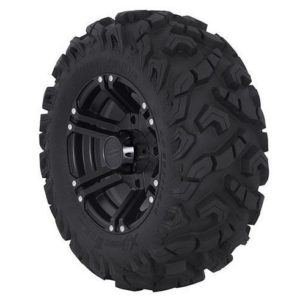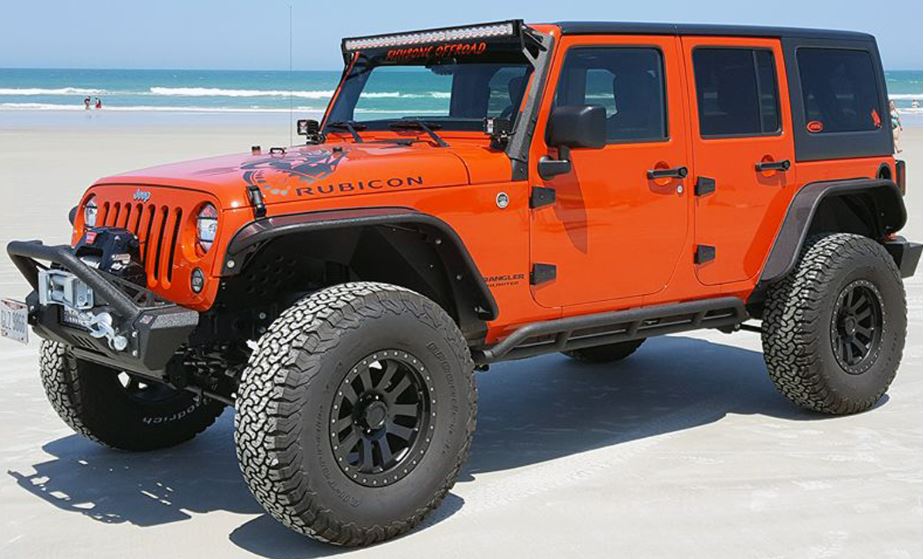
In this article, I’m going to talk about off-road Jeep mods that you should do before hitting difficult trails. I’m also going to talk about mods that are great for a daily driver that hits a few light trails.
Don't feel that you should implement all these mods at once. You can do one at a time, go test it, then start your next modification when you're ready. It may seem overwhelming, but if you take your time and do one mod at a time it’s not that bad. And if you get stuck, just send us an email to info@getliftkits.com.
Let’s dive in!
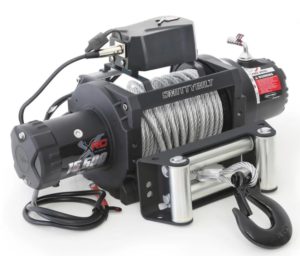
From our experience with off-roading, I quickly realized that recovery and safety are the most important things to consider. If you’re going to go play in the mud or on the trails, there is a strong chance you will get stuck at some point, so finding the best ride is necessary and possible with the car dealership near corpus christi.
It’s always better to have it and not need it than to need it and not have it, as the saying goes. In addition to having the right winch, I recommend spending a little extra on a quality strap or a good recovery rope that can be used to pull you or someone else out.
A winch is something you will need when you're hitting technical trails. They're not just for recoveries, they're for safety as well. A winch can save you from a rollover when things get dicey on a steep hill. And they're great to have for those times when your rig just can't make it over an obstacle.
There are a lot of different makes and models of winches on the market, so pick something in your budget, and make sure it can handle the weight you're intending to use it for. You’re also going to need a mount or a steel bumper to mount it to as well.
When it comes to wire/rope, some guys swear by synthetic rope and others on rope wire. Rope wire can snap and recoil when pulled past its limit, it can also fray and rip your hands when guiding it. Synthetic rope wears out faster when it's rubbed on rocks or rough ground. I suggest reading up on the good and bad of each before making a decision.
I always say “Build it strong enough to handle what you are throwing at!” before hitting difficult trails. Nobody likes getting home and seeing body damage that could have been avoided by buying some premium ice scratchers accessories here. So, you are going to need some armour in the form of heavy-duty bumpers, rock sliders, skid plates, and diff covers.
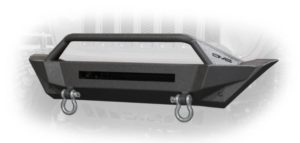
Steel Front bumpers offer much more strength than the factory plastic bumper and have a winch mount and two recovery points. The custom front bumper will improve the approach angle because the bumper is higher allowing tires to climb taller obstacles. Don’t cheese out on the bumpers. Buy from a good quality brand because honestly, your Jeep is worth it.
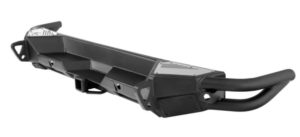
Steel Rear bumpers can be added after the front bumper. Unless you’re hitting difficult trails, you can get away with just using the hitch as a recovery point. But there is a limit where you will need to upgrade to a solid steel bumper with two recovery points.
Rear bumpers protect the body when accidentally backing into a boulder or a tree or landing on a rock. They also give your rig a much more appealing appearance. There are several styles and many brands to choose from including Smittybilt, American Trail Products or Fishbone Offroad to mention a few.
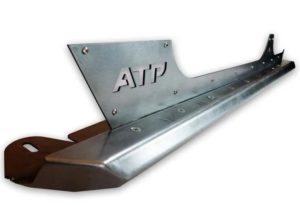
Rock sliders are super important to have before hitting boulder-strewn trails because you know you’re going to end up hurting your Jeep without them.
I recommend a rock slider that sticks out at least a few inches past the rocker panel. A lot of guys like to add a kick out that protrudes out as far as the rear tire, to help push the rig sideways when passing obstacles that might catch the rear tire.
Don’t go cheap on sliders either. You want steel, not little plastic steps. Sliders and bumpers are also necessary if you intend to use a high lift jack.
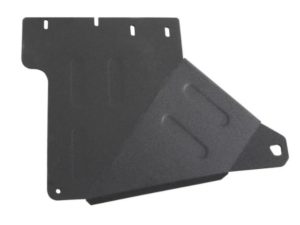
Skid plates are metal sheeting that’s thick enough to withstand hitting rocks. They're used to protect the undercarriage of your Jeep, especially the oil pan, t-case and gas tank. You don't absolutely need this protection unless you're hitting some gnarly trails with giant rocks.
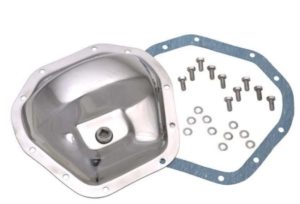
Differential covers are just beefier covers for your diffs. They add extra strength for when you hit rocks with your diffs. Sometimes it's unavoidable or you just didn't notice it coming. Either way it happens. Losing you gear oil on the trail just isn't cool by any means.
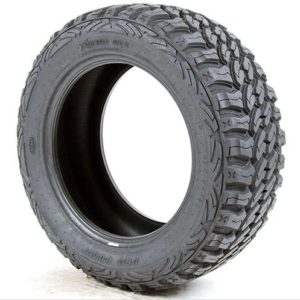
There’s so much to cover on tires I’ll need to write another article, but I’m cover the most important aspects here.
When it comes to Jeep tires, it all depends on what you want to accomplish.
If you spend more time on pavement and only hit some mild trails once or twice in the summer, you won’t need a super aggressive tread. Maybe get an all-terrain or something that doesn’t wear out too fast. Some tires stick to rocks like glue but wear out 3x faster on pavement.
You'll want to take into consideration what terrain you’re going to be riding on most of the time. If you’re in the sand a lot, try an all-terrain tire. If you’re in the mud most of the time, a mud bogger might suit you well. If you’re hitting a lot of rocks, mud boggers tend to slide sideways because the tread pattern is straight across, so you could go with a super swamper for a mixture of rocks and mud.
There’s a lot to consider and you really need to take your time when choosing a tire.
Size matters when it comes to tires and bigger is not always better. If you only hit mild trails, you don’t need 40s, maybe a 33 will work for you. The bigger you go, the more parts you'll need to upgrade to handle them. Most axles can handle 33s, but any bigger and you risk snapping axles and spinning pinions.
Not to mention the steering upgrades you’ll need especially if you choose a wide tire like a 15.50. Even 12.50s will require steering upgrades, or you risk bending and snapping things. I've seen steering boxes rip off the frame with improperly sized tires.
You’ll also want to consider the weight limit and durability. If you’re going to be in the rocks a lot, you’ll want a tire that can handle the sidewall abuse.
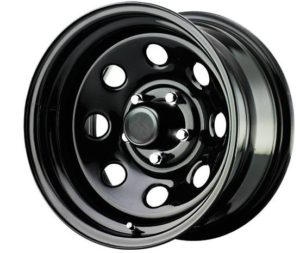
Wheels are also something to consider as you start thinking about tires. If you’re keeping it mild then a simple steel wheel will be perfect, they’re strong and look great with an aggressive tire on them.
If you’re going to be hitting some rocks and mud, you probably want to look at bead locks. Bead locks bolt on to the rim, holding the rubber in place and allowing you to air down even more without breaking a bead; as a result, they achieve more traction and a smoother ride over rough terrain.
You want to pay attention to backspacing. It will make your tires stick out further, which offers more clearance for steering and a wider stance. This will lower your centre of gravity, giving you less chance of rolling over.
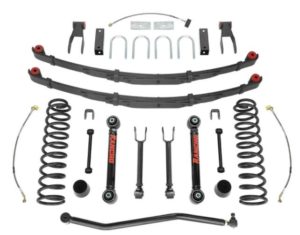
Now you have an idea of the size of tire you want, you need to figure out what size of lift you’ll need to fit those tires on without rubbing. Like the tires, size matters when picking a lift kit. If you go too big, you’re going to run into problems like handling on- and off-road, and the higher you go the easier it is to roll because the centre of gravity is higher.
Rule of thumb is to only lift as much as you need to fit your tires. Trimming and high clearance fenders will help the tires fit, limiting the amount of lift needed to clear the tires.
Let’s take a look at a JK for example. Its 2.5 inches of lift is good for 35s, 3.5 inches of lift for 37s, 4.5 inches of lift for 40s. So, take your time and research what your model needs when choosing tire and lift size.
There are several lift kit styles to choose from and have a wide range of prices. Generally, the bigger you go the pricier they are. If you only want a 2-inch levelling kit, it’s not going to help much for off-roading. Levelling kits are more for clearing larger tires on your daily driver.
If you’re looking for something that will make your rig more capable off-road, you want a kit that comes with springs, shocks, sway bar disconnects, trackbar and mounting brackets, adjustable control arms, preferably long arms if your kit is over 4 inches high. Long arms offer more flexibility and a smoother ride over rough terrain.
Again, don’t cheap out on the lift. You’re upgrading your suspension, the part of the jeep that affects the handling and control. So, take your time, do research, see what people are saying in forums, and make sure you buy a quality brand that puts out durable lift kits in your price range.
As in most cases, you get what you pay for. So, is it worth it to cheap out and have to replace the kit down the road or spend a little extra and have peace of mind?
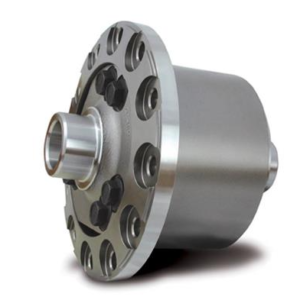
Maybe this should have been one of the first mods listed because of the incredible increase in capability they offer. Though you might want to wait to get lockers because they aren’t cheap. And if you’re going to upgrade your axles to handle the force of a larger tire, there’s no point in paying for them twice.
They're located in the differential and essentially make your axle one, meaning both tires will turn at the same time, whereas without a locker the diff is considered open, meaning if one tire is off the ground it will spin in the air because the power goes to the tire with the least resistance. If you have locking diffs in front and rear when in 4x4, all four tires get power, meaning if only one tire is getting traction you can move.
Without lockers, the driver must gain experience to conquer obstacles. When you're out on the trails you'll notice some drivers are much more capable in less capable trucks. Having all the gear doesn't make you a better driver. That being said there are some obstacles that are simply impossible without lockers.

As mentioned before, a larger tire will put more pressure on the axle because of its increased leverage due to the larger diameter. So, upgrades are a must and can include replacing the entire axle with a beefier one and/or trussing it, meaning welding brackets on to add extra strength, or just getting Chromoly axle shafts that can handle a bit more pressure. But they have limits too and snap when pushed too far. It depends on what you’re aiming for; the larger the tire the more strength you’ll need.
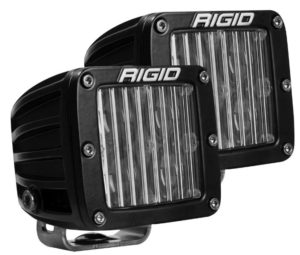
Lights are an especially important mod too. You don’t need to spend a lot or go overboard when buying lights. A super bright light bar is overkill if you’re hitting trails with friends, and you probably won’t use it because it’s blinding to others. Simply upgrading your headlights can be enough to light the trail ahead.
Backup lighting is very important for safety, especially if there are cliffs or drop-offs nearby as you’re trying to manoeuvre. A couple of light pods aiming to the side are helpful when turning down different trails, and if you’re hitting some rocks, rock crawling lights are a must and look really nice when parked.
You’re probably thinking that it sounds expensive and seems overwhelming to do a proper Jeep mod. As I said in the beginning, you don’t have to do it all at once, unless you can afford it then go for it.
But honestly, I find it more fun to take the jeep out and find its limits then improve what you need to conquer the next obstacle. It makes the next upgrade that much more exciting because you get to go test it on the obstacle that held you back, it's the most amazing feeling ever when you beat it!
In the beginning, before you do any mods, you can simply disconnect the sway bars for more articulation. That will help keep all four tires on the ground giving you more capability if you don’t have lockers yet, and your Jeep won't bounce around as much, it will absorb the impacts better smoothing out the ride.
Take your time, do lots of research and have fun. The journey is what it’s all about after all isn’t that what we’re in this lifestyle for?
One last thing I suggest is to try and do all the work yourself then have a licensed mechanic look it over or at least have a full understanding of how to repair anything that might break out there. Always carry the parts that are likely to break like uni joints etc..
I hope you found this article helpful. Just so you know any of the parts listed in this article can be found at Get Lift Kits for the lowest price possible guaranteed. If you have any questions regarding your build our knowledgeable staff will be happy to help you with anything you need.
